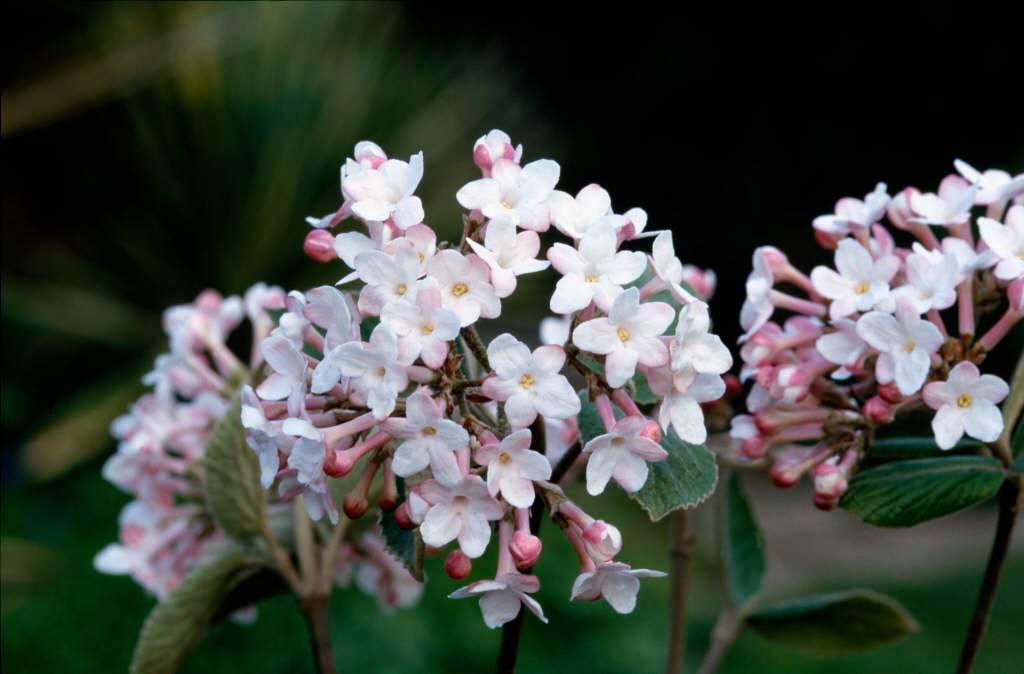Size
Ultimate height
1–1.5 metresTime to ultimate height
10–20 yearsUltimate spread
1–1.5 metresGrowing conditions
Moisture
Moist but well–drainedpH
Acid, Alkaline, NeutralColour & scent
| Stem | Flower | Foliage | Fruit | |
| Spring | Pink White | Green | ||
|---|---|---|---|---|
| Summer | Green | |||
| Autumn | Green | |||
| Winter |
Position
- Full shade
- Full sun
- Partial shade
Aspect
South–facing or North–facing or West–facing or East–facing
Exposure
Exposed or Sheltered Hardiness
H6Botanical details
- Family
- Viburnaceae
- Native to GB / Ireland
- No
- Foliage
- Deciduous
- Habit
- Bushy
- Potentially harmful
- Fruit are ornamental - not to be eaten. Wear gloves and other protective equipment when handling. Pets: Fruit are ornamental, not to be eaten - see the HTA guide to potentially harmful plants for further information and useful contact numbers
- Genus
Viburnum can be deciduous or evergreen shrubs with opposite, simple or palmately lobed leaves and clusters of small, often fragrant white or pink flowers, followed by red, blue or black berries
- Name status
Correct
How to grow
Cultivation
Grows well in most moderately fertile, humus-rich, well-drained soils
Propagation
Propagate by softwood cuttings in summer, semi-ripe cuttings from midsummer to autumn or hardwood cuttings in winter. Layering can be carried out in spring and grafting in late summer
Suggested planting locations and garden types
- Cottage and informal garden
- City and courtyard gardens
- Coastal
- Wall side borders
- Flower borders and beds
Pruning
Pruning group 1. Can be hard pruned successfully in late spring, if required
Pests
May be susceptible to aphids and viburnum beetle
Diseases
May be susceptible to Phytophthora, honey fungus, grey moulds and leaf spot
Get involved
The Royal Horticultural Society is the UK’s leading gardening charity. We aim to enrich everyone’s life through plants, and make the UK a greener and more beautiful place.
